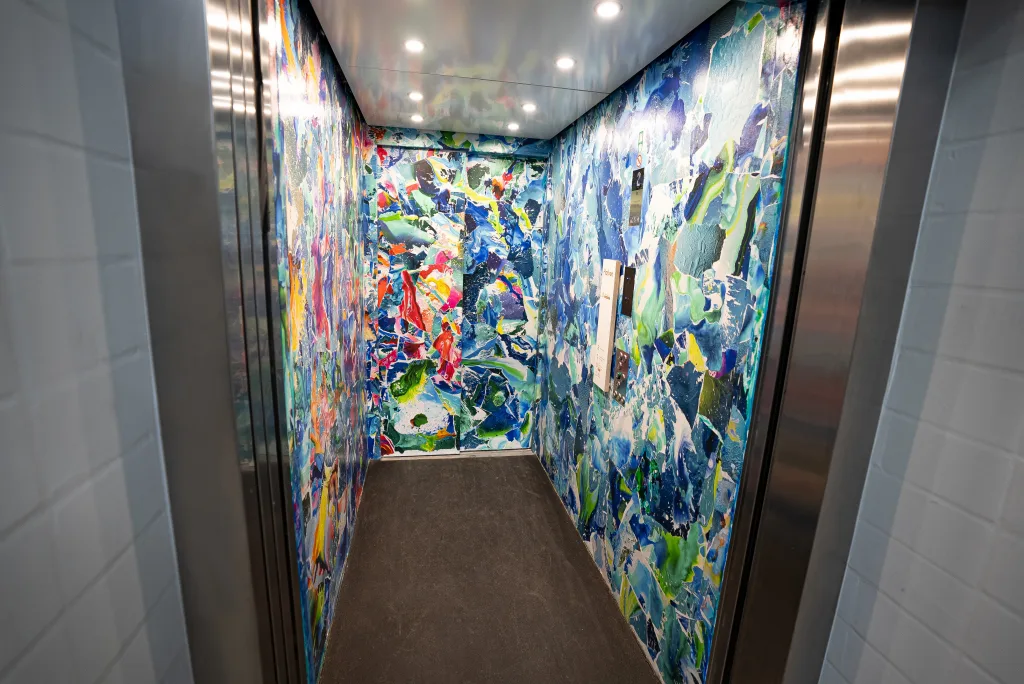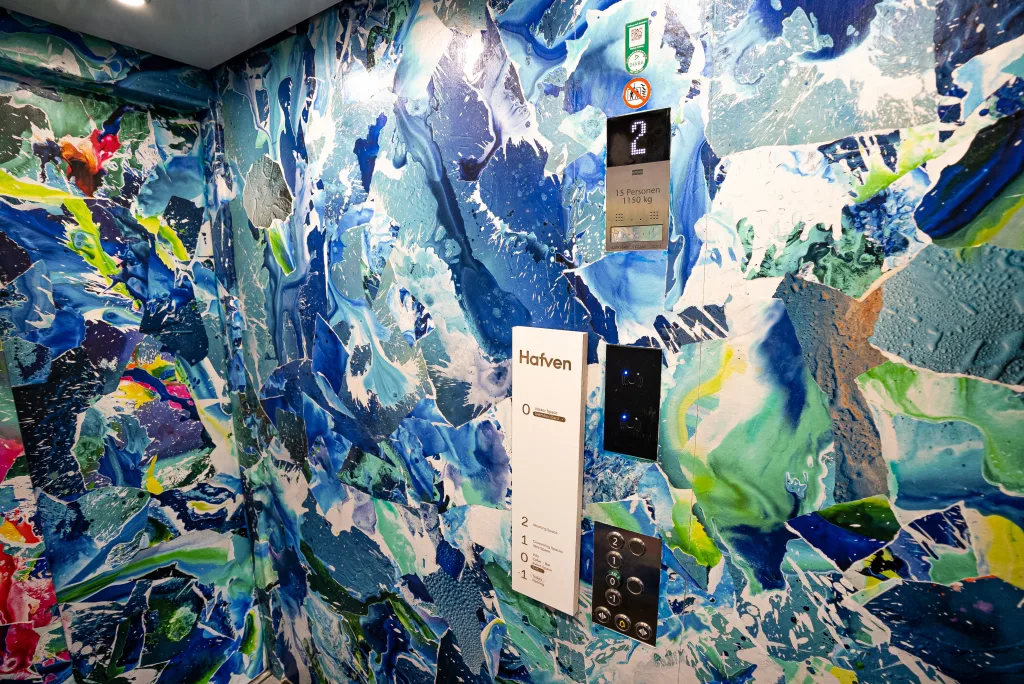The fact that elevators are not just a means of transportation, but can also be unusual design objects with a unique experience, is impressively demonstrated in Hanover. At the "Havfen" creative center, Berlin-based painter Christian Awe has transformed a KONE elevator into an impressive work of art by adding red side panels and a large-scale mix of painting and collage.

When the building was constructed in 2017, the developers and operators deliberately opted for a KONE elevator with simple galvanized sheet steel walls, which would later be artistically designed. These design elements integrate perfectly into the artistic ambience of the "Havfen," which was awarded the Lower Saxony State Prize for Architecture in 2018. Jürgen Pleteit, co-founder and managing director of the creative workshop, explains: "We wanted to do something cool with the elevator, because art and design are part of the concept." In the past, an artist had already decorated the elevator with foil and turf and added an audio installation, although this work was only on display for one week.
From elevator to design object and Instagram attraction
Christian Awe's artwork, on the other hand, is intended to last forever. The artist takes it in stride that it will show signs of wear over time: "There will certainly be scratches, because the elevator is an everyday object. But a work of art like this is alive, and it's no problem for me at all if it needs a little touch-up every two or three years. I find it exciting to be so close to people that they can actually touch the art and truly experience it. Art must be part of life." The unique KONE elevator has now become a tourist attraction, even boasting its own Instagram account and attracting people from all over Germany.
The elevator in "Havfen" in Lower Saxony isn't the only one attracting attention with its striking design. Elevators have also become unusual design objects with marketing potential in many hotels, commercial and office buildings, and shopping centers. For example, the 25hours Hotel The Circle in Cologne installed specially designed KONE elevator cabins with mirrored walls and LED light strips. At the Moxy Cologne Bonn Airport, KONE elevators accompany guests on their journey through the building with travel accessories printed on glass, such as jeans, sneakers, and sunglasses. At the Hotel Pierdrei in Hamburg, copper plates, mirrored panels, and spherical lights in the elevator cabin create atmospheric lighting and mirror effects, and a porthole serves as both a notice board and an information screen.

Elevators create accessibility and inclusion in museums
Cultural institutions with multiple floors pose a significant challenge, especially for people with mobility disabilities and wheelchair users. To make art and culture accessible to everyone, accessibility and equality are paramount in inclusive art education. Accessible elevators from KONE offer an effective solution. They feature ground-level access, automatic doors, and low-level controls that can be easily reached from a seated position to accommodate the needs of wheelchair users.
Two-way emergency call systems connected to a 24-hour emergency call center are mandatory, but are not sufficient for people with speech or hearing impairments. KONE offers emergency call systems for the hearing impaired that enable multilingual, visually supported communication via (touch) displays, as successfully implemented in the Belvedere Gallery. These systems offer an inclusive solution to meet the needs of people with hearing impairments.